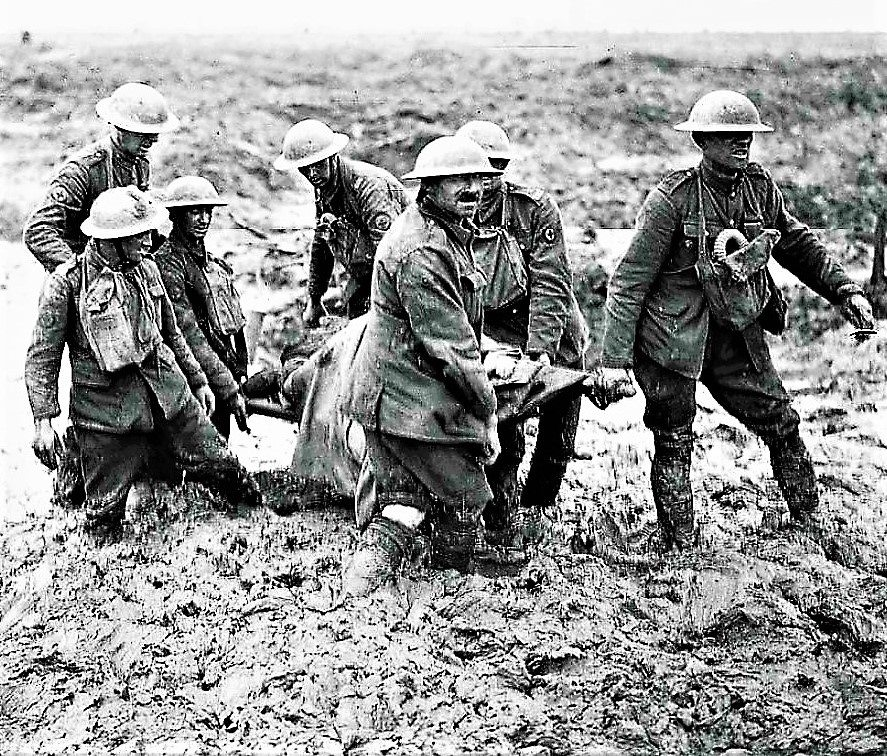The photograph is of a team of stretcher-bearers struggling through deep mud to carry a wounded man to safety near Boesinghe, on the 1st of August 1917, in the Battle of Pilckem Ridge, which was the opening attack of the Third Battle of Ypres (also known as the Battle of
Passchendaele).
Mud, death, and despair, are used to describe this time in WW1. Stretcher-bearers suffered very heavy casualties in WW1. A famous stretcher bearer and ambulance driver during WW1 was the young Ernest Hemingway (American writer). In1918, he was seriously wounded
Mud, death, and despair, are used to describe this time in WW1. Stretcher-bearers suffered very heavy casualties in WW1. A famous stretcher bearer and ambulance driver during WW1 was the young Ernest Hemingway (American writer). In1918, he was seriously wounded
and returned home. His wartime experiences formed the basis for his novel & #39;A Farewell to Arms (1929). There have been a couple of movies made based on his novel. One in 1932, starring Gary Cooper and Helen Hayes, and one in 1957, starring Rock Hudson and Jennifer Jones. One of
the most awarded stretcher-bearers of WW1 was Lance Corporal William Harold Coltman, VC, DCM & Bar, MM & Bar (17 November 1891 – 29 June 1974). He volunteered for the British Army in January 1915, during the opening months of WW1. He served in The North Staffordshire Regiment
(The Prince of Wales& #39;s), in the 1/6th Battalion.
A very well-known person who served in the Australian Army as a stretcher-bearer during WW1 was John Kirkpatrick (enlisted as John Simpson; 6 July 1892 – 19 May 1915). He was a stretcher-bearer with the 3rd Australian Field
A very well-known person who served in the Australian Army as a stretcher-bearer during WW1 was John Kirkpatrick (enlisted as John Simpson; 6 July 1892 – 19 May 1915). He was a stretcher-bearer with the 3rd Australian Field
Ambulance brigade during the Gallipoli campaign. ‘Simpson and His Donkey’, was taught in schools across Australia. Many believe he should have been awarded the Victoria Cross. Lest We Forget.
The photograph came from the Imperial War Museums. Image file number IWM Q 5935.
The photograph came from the Imperial War Museums. Image file number IWM Q 5935.

 Read on Twitter
Read on Twitter


